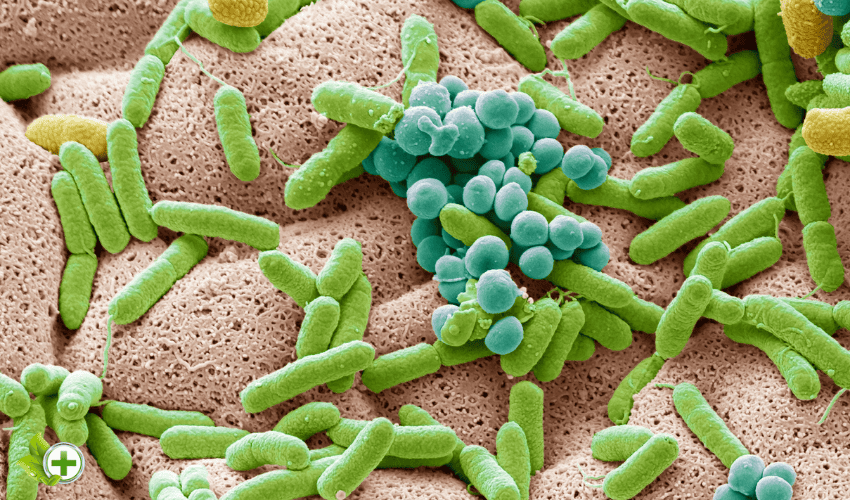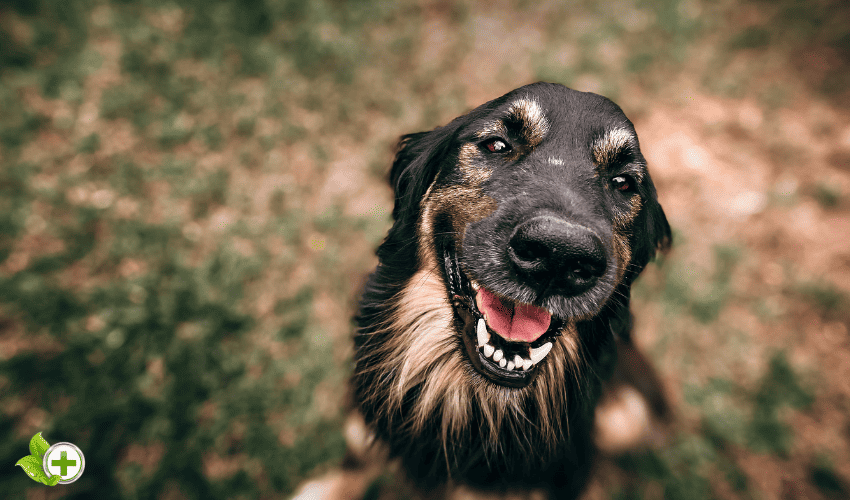Quick Reference
What Are Zoonotic Diseases?
Zoonotic diseases are infectious diseases that can be transmitted from animals to humans. They can also be transmitted from humans to animals, making them a serious public health threat.
Why Should We Care About Dogs Specifically?
27% of 328 million households in the United States have at least one dog. Dogs are particularly important to consider because of how close they tend to be kept to humans.
What Are The Reservoirs Of Zoonoses?
- Domestic animals: cats, dogs, and rabbits
- Wild animals: bats, raccoons, and rodents
- Farm animals: cattle, pigs, ducks, chickens, and sheep
- Insects: fleas, ticks, mites, and mosquitoes
The Most Common Dog Zoonoses
- Rabies
- Noroviruses
- Pasteurella
- Salmonella
- Brucella
- Yersinia enterocolitica
- Campylobacteriosis
- Capnocytophaga
- Leptospirosis
- Bordetella bronchiseptica
- Coxiella burnetii
- Staphylococcus intermedius
- Methicillin-resistant staphylococcus aureus (MRSA)
- Sarcoptes (Scabies/Sarcoptic Mange )
- Toxocara (Roundworm)
- Lyme Disease (Lyme borreliosis)
- Cheyletiella (mites/ walking dandruff)
- Dermatophytosis (Ringworm)
- Ascarids (Roundworms/ Nematodes)
- Echinococcosis (tapeworms)
- Hookworms
- Tapeworms
How To Prevent Zoonoses In Your Pet Dog?
- After handling the dog, properly wash your hands with soap and water
- Keep your dog clean and well groomed
- Avoid allowing your dog to lick your face or hands
- Pick up and dispose of your dog's feces properly
- Visit the veterinarian regularly for check-ups and vaccinations
- Keep your dog away from sick animals
Preventative Medication and Vaccinations for Zoonoses in your Dog
There is no single vaccine or medication that will protect your dog from all zoonotic diseases. But some medications and vaccinations can help prevent your pet from getting some of the more common zoonotic diseases.
- Rabies vaccination
- Bordetella vaccine
- Leptospirosis vaccine
- Anthelminthic (de-worming) medication
- Flea preventative medication
Handling A Zoonotic Disease-Infected Dog
- After handling the animal, properly wash your hands with soap and water.
- Avoid allowing the animal to bite or lick your face or hands
- Wear gloves when handling the animal
- Disinfect and clean any equipment that came in contact with the animal.
People have referred to dogs as "man's best friend" for generations, and so. Dogs show loyalty, give love, and serve as excellent companions.
Due to this fact, people tend to keep them in close contact, including in their homes. While this is a good thing, it does come with some risks, the potential to send diseases from dogs to humans. We refer to these as zoonotic diseases; dog owners must familiarize themselves with a few.
In this article, we're going to explore some typical diseases that dogs can pass on to humans. We'll talk about what to watch for and how to stop these diseases from spreading.

What are zoonotic diseases?
Before we dive into the details about these diseases, let's first understand what we mean by "zoonotic diseases". According to the Center for Disease Control and Prevention, zoonotic diseases are sicknesses that animals can give to people - we also call these zoonoses.
This same source says that stuff like viruses, bacteria, fungus, and parasites can cause a variety of illnesses. These can be a little bit annoying, a whole lot serious, or even so severe they can risk someone's life. A study on skin diseases from dogs and cats that can spread to people shows that animals can give us more than 250 different kinds of these diseases. But don't worry too much, cats and dogs are only involved in less than 40 of them.
Animals can pass these diseases on to humans in several ways. The most common way is through direct contact. This can happen when you touch a sick animal or come into contact with its spit, pee, or poop.
Contact with contaminated soil, water, or food can also send zoonoses. Bugs can sometimes carry diseases and pass them on to people. This happens when they bite an animal that's already sick and then bite a person. Or, if the bug touches the blood of a sick animal and then touches a person, it can spread the disease that way too.
What are the reservoirs of zoonoses?
Animals infected with the disease and can send it to humans serve as the reservoirs of zoonoses. Any animal can be a reservoir for zoonoses, but some are more common than others. The most common reservoirs for zoonoses are:
- Domestic animals like cats, dogs, and rabbits
- Wild animals like bats, raccoons, and rodents
- Farm animals like cattle, pigs, ducks, chickens, and sheep
- Insects like fleas, ticks, mites, and mosquitoes
The CDC (that's like a health authority) recommends being extra careful when you're dealing with wild or farm animals. Those animals are more likely to carry diseases called "zoonoses," which can spread from animals to humans. So, it's important to take some special precautions to protect yourself when you're around these animals.
Fun Fact
Zoonotic diseases in dogs, like Leptospirosis and Rabies, can be transmitted to humans, highlighting the importance of pet vaccinations and good hygiene practices. Hyperthyroidism in dogs is a rare condition, affecting the thyroid gland's hormone production. 🐕💉🦠
Why should we care about dogs specifically?
Even though any animal can carry zoonoses (that's diseases that spread from animals to humans), we should pay special attention to dogs. Dogs are important to consider because they are usually very close to humans as pets.
In the United States, there were around 89.7 million dogs owned by people in 2017. And guess what? That number went up by 54% because of the Covid-19 pandemic. More people decided to get dogs as pets during that time!
Let's say we have around 89.7 million dogs in the United States. Now, if we look at the total number of people living in the country in 2019, which is about 328 million according to the U.S. Census Bureau, we can do a little math. It turns out that around 27% of all the households in the United States have at least one dog. That's quite a few homes with adorable furry friends!
This figure is much higher when the CDC reports that 63 percent of U.S. homes have at least one pet. (Companion Animals and Zoonoses, Slide 19. Pet Ownership in the United States). This close contact between dogs and humans means a more significant potential for the transmission of zoonoses. Further, the statistics stated in the peer-reviewed study of Diseases Transmitted by Man's Best Friend: The Dog in Pubmed say that;
- Annually, almost 5 million people in the United States suffer a dog bite.
- Infection happens in 15% of dog bite wounds.
What this means is that not only is there a potential for dogs to send zoonoses to humans, but also that dog bites are a common source of infection. This is why it's important to be aware of the risks of zoonoses and take precautions to prevent them.
The most common dog zoonoses
Dogs can send many different zoonoses to humans, but some are more common than others.
The most common zoonoses transmitted from dogs to humans are:
Viral infections
Rabies
Rabies is a very serious virus that can make you sick and even be deadly. You can catch it from the saliva of infected animals, usually if they bite you. It attacks your nervous system, causing problems like paralysis (when you can't move), seizures (when your body shakes ), and it can even lead to death.
, rabies is not very common in the United States, but it's still a risk. In 2015, there were only three reported cases of human rabies in the whole country. Most people who might have been exposed to rabies receive a special shot (vaccine) to protect themselves from getting sick. So, it's essential to be cautious around animals and make sure you're safe and vaccinated if you ever have a risk of getting rabies.
Rabies is much more common in other parts of the world. The World Health Organization (WHO) estimates that there are 59,000 human deaths from rabies each year, most of which occur in Africa and Asia. The best way to protect yourself from rabies is to get vaccinated and to avoid contact with animals that may infect you.
If an animal bites you, it's important to clean the wound and see a doctor as soon as possible, as you may need a series of rabies shots.
Noroviruses
Noroviruses are a type of virus that causes vomiting and diarrhea. They're often called "stomach flu" or "food poisoning." Noroviruses are one of the most common causes of gastroenteritis (stomach flu) in the United States. According to the CDC, noroviruses globally cause 685 million cases of gastroenteritis each year.
Noroviruses are usually spread through contaminated food or water. But guess what? You can also catch them if you touch an infected person or even an infected dog. So, it's essential to be careful and keep good hygiene to avoid getting sick!

Bacterial infections
Pasteurella
Pasteurella is a type of bacteria that can cause an infection if you're bitten or scratched by an animal, particularly a cat or a dog.
Symptoms of a Pasteurella infection include redness, swelling, pain at the site of the wound, fever, headache, and nausea. If left untreated, Pasteurella can spread to other parts of the body and cause more serious problems like pneumonia or meningitis.
Pasteurella infections are usually treated with antibiotics.
Salmonella
Salmonella is a type of bacteria that can make you sick with food poisoning. It usually spreads through contaminated food, but you can also get it from infected pets if you touch them. So, it's important to handle food and wash your hands after playing with your furry friends to stay healthy! Salmonella poisoning symptoms include diarrhea, fever, and stomach pains.
If you get sick from salmonella, it can cause some serious problems. You might become dehydrated, which means your body loses too much water. There's also something called septicemia, which is like blood poisoning, and meningitis, which affects your brain and can make you very ill. So, it's essential to take care and avoid getting salmonella in the first place!
Salmonella infections are usually treated with antibiotics, but severe cases may need hospitalization.
Brucella
Brucella is a type of bacteria that can cause an infectious disease called brucellosis. Generally, contact with infected animals spreads it, but contaminated food or water may also send it.
According to the CDC, signs and symptoms of brucellosis include fever, sweats, headaches, muscle pain, and fatigue. These symptoms can persist for several weeks or even months.
Brucellosis is a serious illness that can be fatal if left untreated. Treatment involves the use of antibiotics and rest.
Yersinia enterocolitica
Yersinia enterocolitica is a gram-negative bacteria that can cause an infection called yersiniosis. Usually, infected birds, pigs, deer, and cattle send this zoonosis, but dogs can also send it.
The main symptom of yersiniosis is severe diarrhea that may contain blood and pus. Other symptoms include abdominal pain, fever, and nausea.
Doctors treat Yersiniosis with antibiotics.
Campylobacteriosis
Campylobacteriosis is a zoonose caused by the bacterium Campylobacter. This disease is usually transmitted through direct contact with infected animals and through contaminated food or water.
Campylobacteriosis symptoms include diarrhea, cramps, stomach pain, and fever. More than 50 percent of infected patients suffer from bloody diarrhea. These symptoms often last between two and five days.
Campylobacteriosis is usually treated with antibiotics.
Capnocytophaga
Campylobacteriosis is a type of disease caused by a bacterium called Campylobacter. You can catch this disease by touching infected animals or by eating or drinking contaminated food or water. So, it's important to be careful around animals and make sure your food and water are safe to stay healthy!
Campylobacteriosis symptoms include diarrhea, cramps, stomach pain, and fever. According to NLH, more than 50 percent of infected patients suffer from bloody diarrhea. These symptoms often last between two and five days.
Campylobacteriosis is usually treated with antibiotics.
Tip: Some herbal medications help when your dog suffers from bloating, diarrhea, constipation and stomach discomfort. You can administer them along with the medications that your vet suggests. We recommend reading Top Ten Bloating For Dogs for these medications.
Leptospirosis
Leptospirosis is a disease caused by a bacterium called Leptospira, and it's something we can catch from animals. You can get it by touching infected animals or being around water or soil that's contaminated with the bacteria. In humans, we sometimes call it Weil's disease.
So, it's essential to be cautious around animals and avoid swimming or playing in water that might be infected to stay safe and healthy! Symptoms of leptospirosis include fever, chills, headache, muscle pain, swollen lymph nodes, and nausea.
Doctors treat Leptospirosis with antibiotics. Severe cases may need hospitalization.
Bordetella bronchiseptica
Bordetella bronchiseptica is a bacterial infection that can cause kennel cough. Usually, contact with infected dogs transmits it, but it can also send through the air. Human infections are rare.
Kennel's cough signs and symptoms include a dry, hacking cough, fever, and a runny nose. These symptoms usually last for two to three weeks. Kennel cough is usually treated with antibiotics. In severe cases, hospitalization may be necessary.
Coxiella burnetii
Coxiella burnetii is a type of bacteria that can cause an infection called Q fever. Usually, it transmits through air and direct contact with infected animals, but contaminated food or water can also send it.
Symptoms of Q fever include fever, chills, headache, muscle pain, and nausea. Doctors treat Q fever with antibiotics. Severe cases may need hospitalization.
Staphylococcus intermedius
Staphylococcus intermedius is a type of bacteria that can give you a skin infection called staphylococcal dermatitis. You can catch it by touching infected animals , like when you pet them. But guess what? It can also spread through the air, so you need to be careful around sick animals to avoid getting it!
Symptoms of staphylococcal dermatitis include red, inflamed skin, hair loss, and crusting.
Doctors treat Staphylococcal dermatitis with antibiotics. Severe cases may need hospitalization.
Methicillin-resistant staphylococcus aureus (MRSA)
Methicillin-resistant staphylococcus aureus (MRSA) is a type of bacteria that can cause fatal infections in humans. It's usually transmitted through direct contact with infected animals. This zoonose is usually seen in domestic animals like pigs, horses, cattle, cats, and dogs.
According to NLH, immunocompromised patients are more susceptible to MRSA infections. The symptoms of MRSA depend on the location of the infection. Skin infections usually cause redness, swelling, and pus. Lung infections can cause coughing, chest pain, and difficulty breathing.
Bloodstream infections can cause fever, chills, and low blood pressure. Doctors treat MRSA with antibiotics. Severe cases may need hospitalization.

Vector-borne zoonoses (parasitic infections)
Sarcoptes (Scabies/Sarcoptic Mange )
Sarcoptes, a type of mite, can cause an infection called scabies, also known as sarcoptic mange. Usually, it infects humans through skin contact with infected animals, but contaminated bedding or clothing can also send it.
Symptoms of scabies include itching, redness, scaly skin, and loss of hair. Sarcoptic mange is contagious.
Doctors treat Scabies with topical medications. Severe cases may cause hospitalization.
Toxocara (roundworm)
Toxocara is a type of parasitic worm that can cause an infection called toxocariasis. It's usually transmitted through contact with contaminated water, soil, or sand.
Symptoms of toxocariasis include fatigue, abdominal pain, and coughing. Doctors treat Toxocariasis with antiparasitic medications. Severe cases may need hospitalization.
Lyme Disease (lyme borreliosis)
Lyme disease is a bacterial infection spread by the bite of an infected tick. Lyme disease symptoms include fever, chills, headache, muscle pain, and fatigue.
Doctors treat Lyme disease with antibiotics. In rare cases, they sometimes need hospitalization.
Cheyletiella (mites/ walking dandruff)
Cheyletiella is a non-burrowing mite that can cause an infection called cheyletiellosis. Usually, direct contact with infected pets, especially puppies, transmits it, but contaminated bedding or clothing can also send it.
Symptoms of cheyletiellosis include itching, redness, skin lesions, and bumps on the skin. Doctors treat Cheyletiellosis with topical medications.
Dermatophytosis (ringworm)
Dermatophytosis is a fungal infection that can cause an infection called ringworm. Usually, direct contact with infected pets, especially puppies, transmits it, but contaminated bedding or clothing can also send it.
Symptoms of ringworm include intense itching, redness, and a ring-shaped rash on the skin. Doctors treat Ringworm with antifungal medications.

Ascarids (roundworms/ nematodes)
Ascarids are a type of parasitic worm that can cause an infection called ascariasis. These internal parasites are usually transmitted through contact with a pet's feces.
Symptoms of ascariasis include fatigue, abdominal pain, vomiting, and visible worms in the stools. People can pass this contagious zoonotic disease from one person to another.
Doctors treat Ascarid infections with antiparasitic medications.
Echinococcosis (tapeworms)
Echinococcosis is a life-threatening condition caused by the tapeworm Echinococcus. Contact with contaminated water, soil, or food transmits this zoonose.
Symptoms of echinococcosis include abdominal pain, fever, and weight loss due to the cysts growing in the liver, lungs, or brain.
Doctors treat Echinococcosis with antiparasitic medications and surgery to remove the cysts.
Hookworms
Hookworms are parasitic worms that can cause an infection known as ancylostomiasis. Touch with unclean soil or feces transmits these intestinal parasites.
Symptoms of ancylostomiasis include fatigue, abdominal pain, diarrhea, anemia, and bloody stools. This is a contagious zoonotic disease.
Doctors treat Hookworm infections with antiparasitic medications.
Tapeworms
Tapeworms are parasitic worms that can cause taeniasis. Contact with contaminated food or water transmits these intestinal parasites.
Symptoms of taeniasis include abdominal pain, diarrhea, weight loss, and fatigue.
Doctors treat Taeniasis with antiparasitic medications.
Who are at risk?
Usually, healthy people with strong immune systems are not at risk for developing serious illnesses from most zoonoses. However, certain groups of individuals are more vulnerable and should take special care to avoid zoonoses contact. These groups include:
- Pregnant women
- Infants and young children
- Elderly people
- People with a compromised immune system
- People work with animals or animal products

How to prevent zoonoses in your pet dog?
The best way to prevent your pet dog from getting a zoonotic disease is to practice good hygiene. For this:
- After handling the dog, properly wash your hands with soap and water.
- Keep your dog clean and well groomed. (There are tools that ease your work when grooming your dog.
- Avoid allowing your dog to lick your face or hands
- Pick up and dispose of your dog's feces properly
- Visit the veterinarian regularly for check-ups and vaccinations
- Keep your dog away from sick animals (For this, you can keep your pet in a dog crate when unattended.
Additionally, you can train your dog to avoid contact with other animals through dog training. Dogs respond well to dog treats and positive encouragement.

Preventative medication and vaccinations for zoonoses in your dog
There is no single vaccine or medication that will protect your dog from all zoonotic diseases. But some medications and vaccinations can help prevent your pet from getting some of the more common zoonotic diseases.
For example, many states need annual rabies vaccination, and all pet owners should consider it. This vaccine will protect your dog from the rabies virus, which is a deadly zoonotic disease.
The Vaccines against diseases transmitted from animals to humans journal on PubMed says that there are vaccines for dogs that can prevent other diseases that they might pass to humans too. So, getting those vaccines for our furry friends can keep us all safe and healthy!
Other vaccines that your vet may recommend:
- Bordetella vaccine to protect against kennel cough
- leptospirosis vaccine to protect against this bacterial disease
Further, you can prevent many parasites by giving your dog regular preventive medication. For example, using an approved anthelminthic (de-worming) medication on a monthly basis can help prevent your dog from getting tapeworms, hookworms, and roundworms.
Using a tick and flea preventative medication can also help keep your dog from getting parasites. As always, consult with your veterinarian to see what prevention measures are best for your pet dog.

Handling a zoonotic disease infected dog
When handling an infected animal, you should be aware of the risk factors for zoonotic diseases.
You should:
- After handling the animal, properly wash your hands with soap and water.
- Avoid allowing the animal to bite or lick your face or hands
- Wear gloves when handling the animal
- Disinfect and clean any equipment that came in contact with the animal.
If you happen to handle a rabid animal or a wild animal, you should be extra careful. Immediately report the incident to your local health department or animal control in this case. If an animal bites you, wash the wound with soap and water and see a doctor as soon as possible.
Conclusion
As you see, many zoonoses can infect dogs. But it doesn't mean you can't have a dog at home. Healthy dogs can be wonderful pets that bring joy to our lives.
Taking several precautions can help prevent your pet dog from getting a zoonotic disease.
And, if you do find yourself dealing with a zoonotic disease, don't panic. There are many ways to treat and prevent these diseases. So, get informed and take the necessary steps to keep you and your pet dog healthy and happy.
FAQ
What Diseases Can You Get From Dog Saliva?
Many diseases can be transmitted through dog saliva. Some of the more common ones include: Rabies, Bacterial infections (such as leptospirosis) and Capnocytophaga.
Is Canine Distemper Zoonotic?
Canine distemper is not a zoonose. Some illnesses such as parvovirus, distemper, and heartworms do not affect humans.







